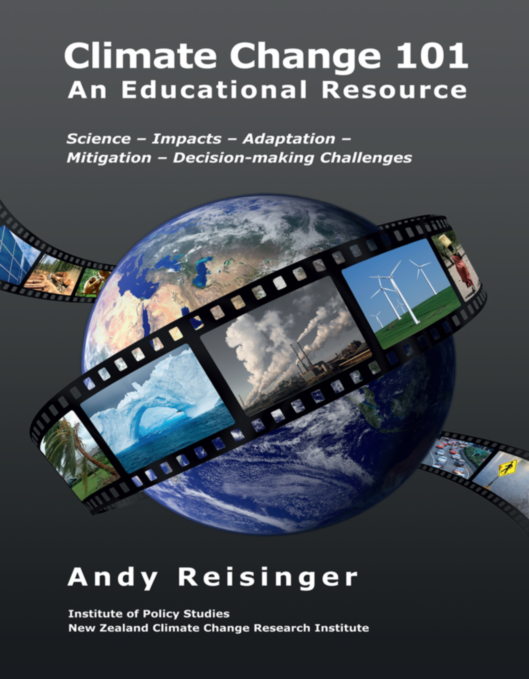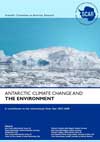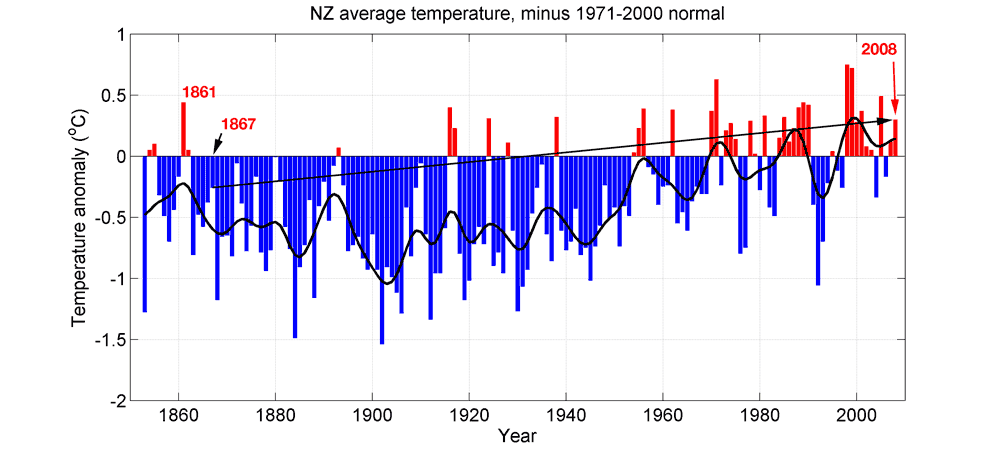 Third essay in the Imagining 2002 series comes from Imagineer Dave McArthur, who examines how NZ made the transition “from being per capita one of the most violent and polluting nations on the planet to a centre of harmonious practice”.
Third essay in the Imagining 2002 series comes from Imagineer Dave McArthur, who examines how NZ made the transition “from being per capita one of the most violent and polluting nations on the planet to a centre of harmonious practice”.
It is 2020 and we have finally worked out the nature of the mysterious force that came to dominate human affaires and transformed global society a decade earlier. A consensus now exists that if this force had not emerged then the existing play of physical forces were all set to form a confluence that would have resulted almost certainly in a catastrophic world war about 2013 in which many billions of people perished in terrible ways.
All manner of experts have endeavoured to identify this great force that prevented such misery and grief. Only now are we aware of how its enormous transformative potential existed in a latent form in nations for centuries. There are few records of it being mentioned in the daily discourse of people this last century or so and we still do not understand how humans suddenly were able to harness its powers so effectively. This much is known:
In the 20th Century we human beings had developed industrialised processes of slaughter of all kinds of creatures, including the massacre of our own species on continental scale. By 2009 many people were feeling helpless as they and their communities were buffeted by an aggregation of hostile forces – climatic, hygroscopic, hydrologic, carbonic, phosphoric and other elements that normally sustain human life. Studies of the language of the period reveal much self-hatred and the demonising of other races and cultures, carbon, climate change, water, global warming and even energy itself.
The rare accounts we have of those who don’t generally write the history books indicates that many people had gut feelings of increasing impotency and deep dread of imminent societal collapse. It is clear that media accounts and official statistics of the period did not accurately reflect their experience of growing inflation and loss of wealth, rising household debt, malnourishment, pollution and crime. It is evident that by 2009 this was also occurring on scale to the middle class in supposedly rich countries.
All manner of systems, including credit systems, built on a valuation of mineral oil of $US25 a barrel were imploding. They were set for imminent collapse as this immensely valuable mineral resource was being depleted in insane ways (private cars, trucks, jets, fertiliser, “disposable” items etc.).
This confluence of forces made a seismic lurch into catastrophic warfare inevitable.
It is probable that a combination of the widespread gut feelings of the futility of war and a desire for civilisation generated the behavioural change. It is instructive to study the transformation of the small country of New Zealand. It changed from being per capita one of the most violent and polluting nations on the planet to a centre of harmonious practice. We are now aware that the following prime changes occurred.
Education
Traditionally the abuse of the nation’s carbon, water, solar and electrical potential had been enabled by a curriculum that taught that science is a way of thinking devoid of moral force. The result was a reverence for an amoral, all-powerful god called “The Market” plus the destruction of most of New Zealand’s forests and much of its soil, water and air quality.
By 2009 the new neurophysics research capacity showed clearly the powerful and integrated roles of our primal psychology, “mirror neurons” and symbol use. Quantum physics indicated information is physical. We know some people were concerned too by documentation showing that the average New Zealander consumed resources at over five times the sustainable rate of planet Earth. We know some also realised the nation’s high level of destruction of remaining mineral oil and gas reserves would have an incalculable negative affect on our options in 2020 and beyond.
These are some of the possible reasons why a national consensus emerged in 2010 that an education system could no longer be evaluated by what its graduates said. The truer measure of quality education is what graduates actually do.
This new measure immediately revealed the traditional Education Curriculum Framework was fatally flawed. The subsequent review redefined the nature and role of science. Science became the driver of all education and was redefined as a state of being in which the following qualities are each necessary requisites for the state of science to exist:
- Compassion in learning
- Collegiality and sharing
- Time and reflection
- Inquiry and inclusiveness
- Honesty and trust
The effects of this new National Education Curriculum Framework were almost instantaneous and profound. A great transformative force occurred. Students now understood science is a state almost every human is born into. They were no longer taught that Science is a special way of thinking, only attainable by a small clever elite called “scientists” who understood “science”.
Instead they now understood the state of science is a dynamic moral condition that enables the arts, language and civics to thrive. It is the essence of effective learning.
This new consciousness spread rapidly into communities. Schools restructured their learning activities and teachers their lifestyles. Their communities became excited by the changes and rapidly adopted them. There are many accounts in which people speak of their ”creative potential being unshackled” and experiencing “new and wonderful meaning” in their lives.
It is clear this restructured education curriculum played an essential role in releasing this mysterious potent force that came to dominate human affaires. It is difficult to determine how much the altered curriculum affected the simultaneous transformations that occurred in other spheres of human activity. [Sustainability Principles: NZ Curriculum]
Population
Previously any fall in a nation’s population was experienced as a sign of a failing economy. People who decided to have childless and sole child families were derided as greedy and spiritually deprived, particularly in Anglo-American nations like New Zealand. Now access to family planning facilities became a universal civic right and those who decided not to propagate became revered. A nation’s health was now measured by its ability to reduce its population in careful humane ways.
Copyright
For over a century an elite, usually those who most benefited from private corporations, fostered the belief that copyright law enabled creativity and wealth creation. The 2008 economic implosion in supposedly wealthy nations addicted to the copyright ethos may have alerted many people to the dangers of this myth. Nations like the USA and New Zealand which should most have profited from copyright were instead now revealed as bankrupt and dangerous.
The transformed education curriculum also made it obvious to most people that copyright destroys creativity and wealth because it disables all the requisites necessary for science to exist.
The review and mass rejection of copyright law that resulted caused a great flowering in the varieties of technology, media, music, arts and other meaningful options available.
The review and mass rejection of copyright law that resulted caused a great flowering in the varieties of technology, media, music, arts and other meaningful options available. It is difficult in 2020 to comprehend the scale of the starvation and under nourishment, wars, waste, inequity, pollution, wasteful devices and unsustainable practices that existed just ten years ago because of copyright.
“Energy” and “Power”
Study of all forms of media indicates that an oligarchy of merchant bankers dominated human discourse till a decade ago. This small group determined the use of these prime symbols. They promoted uses of these vital symbols by which the symbols were associated with the products they most profited from. By 2000 the “energy” and “power” symbols were synonymous with fossil fuels and Bulk-generated electrical products.
These symbol associations generated addictive uses of these resources and destroyed science on scale.
We now understand clearly the fatal flaw in this behaviour; the dangers of confusing energy/power with individual forms; and the dissonance generated in the denial of the Conservation Principle of Energy. All children are now taught a working knowledge of the wisdom in that great guide to symbol use –the Sustainability Principle of Energy.
Energy is now experienced as the potential of the universe(s) and power as a measure of the rate the potential is manifest. It is difficult in our current sense of bounty to imagine the sensations of deprivation and disconnection experienced by people a decade ago.
Media
The new education curriculum had a spontaneous effect on journalism schools. Students and professionals alike were filled with a refreshed sense of science. This was incompatible with the century old corporate media structures designed to serve the short-term selfish interests of the controlling oligarchy.
Dedicated journalists realised their lifestyles defined their journalism. Many elected to work part time in manual and other jobs for independence of income and to employ the new electronic media in ways that enabled deep integrity of journalistic practice.
Dedicated journalists realised their lifestyles defined their journalism. Many elected to work part time in manual and other jobs for independence of income and to employ the new electronic media in ways that enabled deep integrity of journalistic practice. Their dedication was soon rewarded. New Zealanders, motivated by the newfound feelings of stewardship and meaning enabled by the new education curriculum, responded by supporting quality journalists directly, just as they now valued and directly supported artists, musicians, researchers, teachers et al in their communities now. Public broadcasting facilities began to flourish as the charters governing Radio NZ and Television NZ were rewritten to enable true national discourse.
Carbon Potential
New Zealand’s history since 1800 is characterised by an abuse of its carbon potential -deforestation, monoculture, destruction of soil life and high carbon pollution of the atmosphere. In the 1990s it was in the forefront of the development of a global Carbon Trading scheme by which nations ceded sovereign rights and responsibilities to an oligarchy of stateless merchant bankers/traders. In 2008 it was one of the first nations to cede away stewardship of carbon and allow this stateless oligarchy of “carbon traders” to set the value of carbon forms.
It is easy now in 2020 to identify the psychopathy and psychosis of this brutal regime. It was not so easily apparent then. We know the 2009 reforms of this “Emissions Trading Scheme” (ETS) reinforced in many New Zealanders their gut feeling of great unease that the ETS represented a gigantic rort. They sensed the hideous course of the Carbon Trader pathology.
In 2010 we see the resurrection of the NZ Values Party, based on values of personal and sovereign stewardship of carbon. This Party had unique resonance in the new spiritual climate and soon other parties withdrew support for the ETS.
Since 2010 the majority of New Zealanders have welcomed the self-imposed annual doubling in value of carbon forms like mineral oil. This has allowed the investment required to create the wonderful electrical mass transit systems and work/recreational potential we enjoy today plus the elimination of our national debt.
Modern carbon uses, such as the use of polymers for transfer and storage of electrical products and of biomass for storage of data, illustrate very clearly it is not how much carbon we use but how we use it that matters.
Electrical Potential
New Zealand’s abuse of this potential is similar in magnitude to that of its abuse of carbon. The prevalent myth, propagated by this same oligarchy of merchant traders for a century, was that their Bulk-generated electrical products ARE energy, power and electricity. This myth soon dissipated in the much-enhanced state of science that emerged. Students now associate energy and power with bounty and variety. They also now comprehend that electricity does not exist. They are careful to symbolise each of the very different electrical phenomena that do exist and this is a reason why our dwellings are now such sustainable sources of amazing electrical products.
Students are now also skilled to differentiate between “smart” and “intelligent” electrical technology”. We now recognise that “smart” uses of technology can easily destroy democracy and put us all at risk. We know that “intelligent” uses involve all the community in an equal democratic conversation of how their local electrical potential is used. Most students are now capable of rating local grids on an intelligence continuum.
It is clear this proliferation of resources could not have occurred without the repeal of the 1993 and 1998 NZ Electricity Industry Reform legislation. This repressive legislation was designed with 100% effect to remove the historic right of all New Zealand communities to own the intelligence of their local electrical potential. By 1999 not one community retained that right anymore.
It seems the repeal and re-enfranchisement of NZ citizens occurred with surprising ease. Perhaps it was the prospect of the imminent and horrific war in which our large dams and other Bulk-generation devices would be prime targets of obliteration? Perhaps it was the gut level unhappiness of their families and their staff of their roles? Whatever, records show many top managers of the Bulk-generation corporations in the sector urged the Government repeal of the Electricity Industry Reform legislation. There are many subsequent accounts in which both executives and staff speak of the sense of release, exhilaration and reward they now experience working in the multitude of community-based structures that sprang up again after the repeal.
Solar potential
In 2020 we take if for granted that before enacting any major legislation we ask how it impacts on our capacity to conserve and maximise our solar potential. A decade ago nearly all building and “environmental” regimes were designed to serve the short-term interests of the banker oligarchy. They determined how we built and used our dwellings and communities. They controlled all electrical metering and most electronic information transfers, transport structures and food distribution. Speculators commonly built to destroy urban solar potentials whereas now we would not dream of building a dwelling without, for instance its roof facing to the sun. Whereas local councils were primarily Building Code enforcers a decade ago they and the new Building Code are now the prime drivers of research and education of sustainable design.
The power of the mysterious force alluded to is such that in 2010 the NZ Minister of Energy and Resources, Hon Gerry Brownlie, realised such a title is patently ludicrous. Unlike his immediate predecessors he gained the fortitude and inspiration to transcend his ego.
The power of the mysterious force alluded to is such that in 2010 the NZ Minister of Energy and Resources, Hon Gerry Brownlie, realised such a title is patently ludicrous. Unlike his immediate predecessors he gained the fortitude and inspiration to transcend his ego. In 2010 the pretentious and destructive role of Minister of Energy was laid to rest and in its place we now have various ministries, including the Ministers for Conserving our Solar Potential, our Mineral Potential, our Electrical Potential and our Carbon Potential.
Economics
This, like Environmental Education, exists mainly in our history books now. Both are superseded by the powerful discipline of civics. Economics a decade ago is best characterised as a religion in which believers defer to an omnipotent Being called “The Market”. Study of the literature and media of last century reveals a growing tendency to ascribe all manner of human qualities to this transcendent “Being”. Typical was media statements of belief that “The Market likes/does not like this decision/that Government policy”.
In 2020 we recognise the dangerous pathology of this religion and how it nearly destroyed humanity. We now are mindful to conserve the potential of the “market symbol” and know there are all manner of markets involving every type of human interaction. To each we give a name.
Similarly Environmental Education was a sophisticated form of Banker Speak that destroyed science on scale in our communities. The advent of the science-based curriculum placed personal stewardship at the centre of the study of all disciplines. This, plus an enhanced sense of integration with all, caused both concepts to fade into irrelevance.
Democracy
In 2020 in our privileged state of science the majority of citizens now embrace our roles as stewards. We are much more aware that our every action is a vote. In 2009 the average NZer had no awareness that they placed their most potent votes at the petrol pump, airline counter, supermarket checkout and dwelling switchboard. These votes determined the quality of their Parliament and thus New Zealand MPs were characterised by fear and amorality. Hansard records reveal that every party approved the ETS and Electricity Industry Reforms. It is hard now to imagine how impotent and exploited the average citizen was.
Some call 2020 the Great Solar-Electrical Age. Others who are aware of how close human kind came to triggering a catastrophic global war in 2013 call it the Age of the Bloody Lucky. Perhaps it is best known by the name of that mysterious transforming force that underpinned all the changes mentioned – The Age of Compassion. It was this force that enabled even members of the psychopathic Banker oligarchy to experience the moments of other sentient beings and to transcend their own greed and suffering for vital periods. They thus decided not to risk a vast escalation in needless misery by abusing the insights in articles like this one. Compassion prevailed.
Like this:
Like Loading...



 Third essay in the Imagining 2002 series comes from Imagineer
Third essay in the Imagining 2002 series comes from Imagineer  The National Institute for Water and Atmospheric Research (
The National Institute for Water and Atmospheric Research (